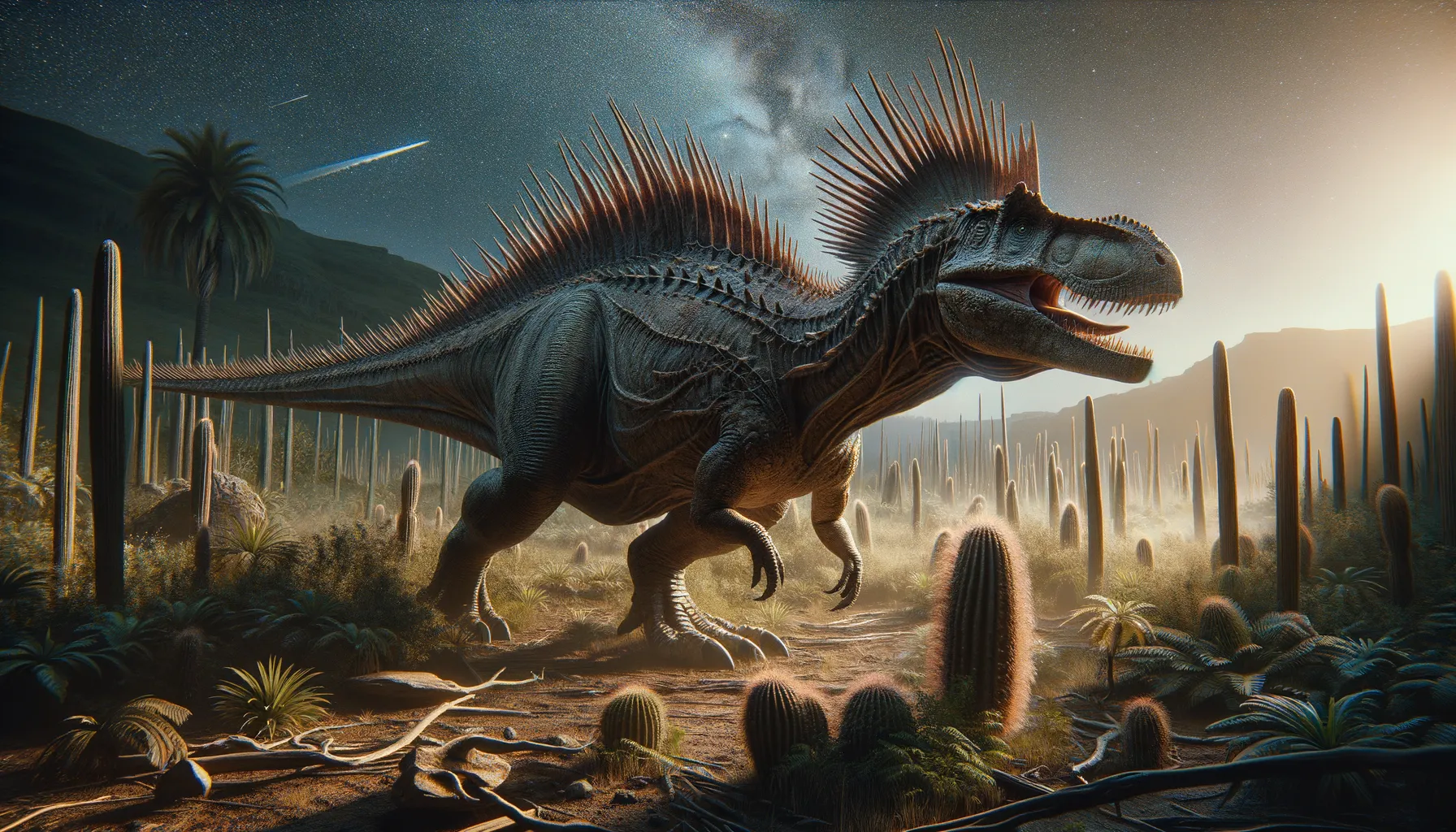
Acanthopholis
Armored herbivore of the ancient world.
Period
Cretaceous
Length
Up to 5 meters in length.
Height
Roughly 1.5 meters tall at the hips.
Weight
Approximately 300 to 400 kilograms.
Acanthopholis was an armored dinosaur known for its protective spines and scales. It roamed the Earth during the Cretaceous period, primarily in what is now Europe. As a herbivore, it relied on its armored body for defense against predators. This dinosaur's closely packed teeth suggest it had a diet consisting of fibrous plants, which were abundant in its environment.
Diet
Acanthopholis was a herbivore, feeding on various plant materials. Its teeth were adapted for grinding tough vegetation, suggesting it grazed on low-lying plants and possibly shrubs.
Hunting
Acanthopholis did not hunt as it was a plant-eater. It likely foraged for food in groups to minimize the risk of predation.
Environmental challenges
Living in a period where large predators roamed, Acanthopholis had to protect itself using its armor. Seasonal changes likely influenced the availability of its food. Environmental stressors such as droughts may have also impacted its survival, requiring adaptations in feeding behavior.
Speed
Likely slow due to its heavy armor.
Lifespan
Possibly several decades like other herbivorous dinosaurs.
First discovery
First discovered in England in 1865 by John Thomas Quekett.
Fun Facts
- Acanthopholis was a dinosaur that lived during the early Cretaceous period, around 100 million years ago.
- Its name, Acanthopholis, means 'spiny scales', which refers to the rows of tough, bony plates along its back.
- This dinosaur was herbivorous, meaning it primarily fed on plants, like many other armored dinosaurs.
- Fossils of Acanthopholis have been mostly found in England, showing that this region was once home to diverse dinosaur species.
- Despite its robust armor, Acanthopholis was relatively small, measuring about 15 feet long.
- Acanthopholis had small, leaf-shaped teeth, suitable for chomping on vegetation rather than meat.
- Known mainly from pieces of armor and bones, much about Acanthopholis' full appearance and behavior remains a subject of scientific research.
Growth and Development
Acanthopholis would hatch from eggs, initially small and vulnerable. As it grew, its bony armor developed, offering increased protection. Growth rates may have varied depending on environmental conditions and food availability.
Habitat
Acanthopholis inhabited lush, vegetated regions that provided ample food sources. This environment included coastal floodplains and forested areas. Its habitat offered natural defenses against predators, such as dense foliage.
Interaction with other species
Acanthopholis shared its environment with various other dinosaur species, some of which were carnivorous. It may have formed herds for added protection against these predators. Interactions with other herbivores might have involved competing for food resources.
Natural lifespan
Acanthopholis potentially lived for several decades, similar to other armored dinosaurs.
Reproduction
Reproduction involved laying eggs, likely in nesting sites within its habitat. Parental care is not well-documented, but like many dinosaurs, it might have offered some protection to its young. Group nesting behaviors could have been a strategy to increase offspring survival.
Social behaviour
Acanthopholis may have lived in groups as a strategy to deter predators. Social interactions would have included foraging in packs. This social structure provided safety in numbers and enhanced survival chances.
Fossil locations
Fossils of Acanthopholis have primarily been found in England, specifically in the chalk cliffs of southern England. These discoveries provide valuable insights into its anatomy and lifestyle. The fossils are limited, but they offer a glimpse into the Cretaceous ecosystem it inhabited.
